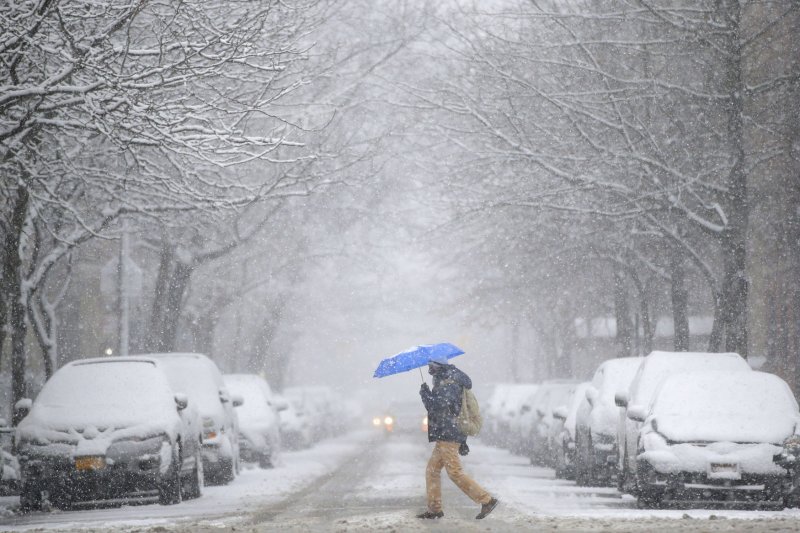A man walks with an umbrella while crossing the street in New York City on March 21. According to a new survey, 4,453 pedestrians were fatally hit by vehicles in the dark in 2016. Photo by John Angelillo/UPI |
License Photo
May 8 (UPI) -- Pedestrian deaths have increased by 49 percent since 2009, according to a survey published Tuesday by the Insurance Institute for Highway Safety.
A total of 5,987 pedestrians were killed in crashes in 2016, the IIHS found. Pedestrian deaths reached their lowest point in 2009 before the recent spike. And before 2009, pedestrian deaths had been steadily falling with a 20 percent decline since 1975.
But that nearly 30-year trend has now reversed and the use of SUVs appear to be a major factor.
"Although pedestrian crashes most frequently involved cars, fatal single-vehicle crashes involving SUVs increased 81 percent, more than any other type of vehicle," the IIHS stated. "The power of passenger vehicles involved in fatal single-vehicle pedestrian crashes, as measured by the ratio of horsepower to weight, also increased, with larger increases at the top of the scale."
But it's not just SUVs that are to blame. Pedestrian deaths have increased increased 54 percent in "urban areas," which include both cities and suburbs, including 67 percent on arterials, 50 percent at nonintersections and 56 percent in the dark.
These increased numbers could be due to not having enough sidewalks, poor visibility or ignorance of pedestrian right-of-ways, people walking longer distances and electing not to go to crosswalks designed for pedestrian crossing, non-working traffic lights and an increased number of drivers on the roads going faster.
"The improved economy may be one factor, with more driving, more traffic, and more road users out and about in general," IIHS spokesman Russ Rader told Consumer Reports. "More people may be walking because of the education efforts in recent years surrounding health and fitness. We can only speculate on this question."
The IIHS recommends improved sidewalks, crossings with lighted beacons to alert drivers to pedestrians crossing the street, lower speed limits and improved vehicle lights.
Of the 5,987 pedestrian deaths in 2016, 4,453 pedestrians were killed in the dark.















